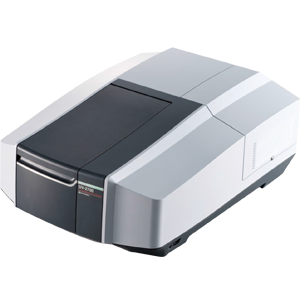UV-2600/2700

Enquire Now
Hardware Specifications
| Item | UV-2600 | UV-2700 |
| Photometric system | Double-beam optics | |
| Photometric system | Czerny-Turner mounting Single monochromator Lo-Ray-Ligh grade blazed holographic grating | Czerny-Turner mounting Double monochromator Lo-Ray-Ligh grade blazed holographic grating |
| Detector | R-928 Photomultiplier | |
| Light source | 50 W halogen lamp, deuterium lamp, light source auto position adjustment built in | |
| Setting wavelength range | 185–1400 nm | |
| Measurement wavelength range | 185–900 nm | |
| 220 nm to 1400 nm when the ISR-2600Plus Integrating Sphere Attachment is used. | The ISR-2600Plus Integrating Sphere Attachment cannot be used | |
| Wavelength accuracy | ± 0.1 nm (656.1 nm D2), ± 0.3 nm (all range) | |
| Wavelength repeatability | ± 0.05 nm | |
| Wavelength scanning speed | Wavelength slew rate: about 14000 nm/min Wavelength scan rate: about 4000 to 0.5 nm/min | |
| Wavelength setting | At 1 nm units for scan start and scan end wavelengths, and 0.1 nm units for other wavelengths | |
| Lamp interchange wavelength | Auto switching synchronized with wavelength; switching range selectable between 290 and 370 nm (0.1 nm units) | |
| Spectral bandwidth | 0.1/0.2/0.5/1/2/5 nm L2/L5 (low stray-light mode) | |
| Resolution | 0.1 nm | |
| Stray light | Max. 0.005 % (220 nm, NaI) Max. 0.005 % (340, 370 nm, NaNO2) Max. 1 % (198 nm, KCl) | Max. 0.00005 % (220 nm, NaI) Max. 0.00002 % (340, 370 nm, NaNO2) Max. 1 % (198 nm, KCl) |
| Photometric modes | Absorbance (Abs.), transmittance (%), reflectance (%), energy € | |
| Photometric range | Absorbance: −5 to 5 Abs Transmittance, reflectance: 0 to 100000 % | Absorbance: −8.5 to 8.5 Abs Transmittance, reflectance: 0 to 100000 % |
| Photometric accuracy | ± 0.002 Abs (0.5 Abs) ± 0.003 Abs (1 Abs) ± 0.006 Abs (2 Abs) ± 0.3 %T Measured using NIST930D/NIST1930 or equivalent filter | |
| Photometric repeatability | ± 0.001 Abs (0.5 Abs) ± 0.001 Abs (1 Abs) ± 0.003 Abs (2 Abs) ± 0.1 %T | |
| Noise level | 0.00003 Abs RMS (500 nm) | 0.00005 Abs RMS (500 nm) |
| Baseline flatness | ± 0.0003 Abs (200–860 nm), 1 hour after light source is turned ON | ± 0.0004 Abs (200–860 nm), 1 hour after light source is turned ON |
| Baseline stability | Within 0.0002 Abs/h (700 nm), 1 hour after light source is turned ON | Within 0.0003 Abs/h (700 nm), 1 hour after light source is turned ON |
| Sample compartment | Internal dimensions: W150 × D260 × H140 (mm) Distance between light beams: 100 mm Maximum optical path length of cell: 100 mm | |
| Dimensions | W450 x D600 x H250(mm) | |
| Weight | 23 kg | |
| Operating temperature | 15°C to 35°C | |
| Operating humidity | 30 % to 80 % (no condensation, less than 70 % above 30 °C) | |
| Power requirements | 100 to 240 VAC, 50/60 Hz | |
| Power consumption | 170 VA | |
Software Specifications
UVProbe Software
| Operating System | Windows 7 Professional (64/32 bits) |
| Data Acquisition Modes | Spectrum, Photometric (quantitation), and Kinetics (time course) |
| General |
|
| Spectrum Mode |
|
| Data Processing in Spectrum Mode |
|
| Photometric (Quantitation) Mode |
|
| Kinetics (Time Course) Mode |
|
| Report Generator |
|
UV Validation Softwar
| Inspection Items | Initialization results log • Wavelength accuracy • Wavelength repeatability • Photometric accuracy • Photometric repeatability • Resolution • Stray light • Baseline flatness • Noise level • Drift (baseline stability) |
| Features | • Select the items to implement during inspection to confirm the approximate time required for full inspection. |
| • The system is capable of both wavelength repeatability checks and wavelength accuracy checks using a wavelength calibration filter. If the optional mercury lamp unit is used, wavelength accuracy can be inspected using the low-pressure mercury lamp's bright line. | |
| • The software is capable of resolution inspections using methods defined in the EP (European Pharmacopoeia) and USP (United States Pharmacopoeia) as well as the method for checking the bright line spectral bandwidth. |
